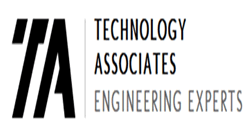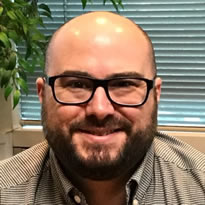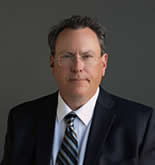Participation of the proper automotive expert in a personal injury lawsuit can govern its success. This article develops four basic principles to optimize their use, while minimizing their cost, and describes some important techniques used by the accident reconstructionist. The primary task of a technical expert is to establish the causes of an incident based on physical and life sciences. Working with attorneys, the expert must communicate the information effectively to arbitrators or jurors and help establish responsibility for the incident. During this process, certain issues associated with the attorney/expert relationship become extremely important. Based upon experience with thousands of cases over the past decades, we have uncovered four basic principles to optimize time, monetary investment and success rate in cases requiring automotive expertise:
- Choose the right expert for your case.
- Get the technical expert involved early.
- Use him to help you and the jury understand the essential scientific aspects of your case.
- Maintain good and timely communications with him.
1. CHOOSING THE RIGHT EXPERT
Personal injuries resulting from automotive incidents can result from a) faulty equipment, b) defective roadways, c) improper driving, or a combination of these. Initially, the cause of an accident may not be clear and so all possibilities should be considered by the attorney and experts he consults. Many disciplines may be involved in properly determining causation, and the typical "accident reconstructionist" who only determines vehicle speeds may not have sufficient expertise in all areas required to properly pursue or defend a case.
Motor vehicle equipment performance can be crucial to an accident reconstruction, such as brake components, steering linkages, tires and suspension parts that govern vehicle control and may require an expert's examination. The roof, glass and external structure should protect an occupant from reasonable outside penetrations, while seatbelts, airbags seatbacks and padding should provide further protection from interior occupant impacts. There have been cases where the roof of a vehicle is crushed during a rollover and questions arise as to the vehicle's crashworthiness. Other cases may hinge on claims that airbags did not deploy, seatbelts did not lock properly or that the cruise control did not disengage when it should have. In such instances, an expert is required to examine not only the vehicle's mechanical components and various modules, but to also consider related evidence, such as vehicle crush and computer-stored codes or black box recorder data. Analyses of such issues may require an individual with expertise in structural and/or mechanical engineering, biomechanics, automotive mechanics or a combination of these areas, as well as accident reconstruction.
Roadway hazards, such as improper drop-offs or curbs, inadequate roadway containment (i.e. land barriers), off-road obstacles (e.g. sign posts) or on-road hazards (e.g. unanchored road cover-plates), or improper signage or poorly placed or timed traffic controls at crossings can also cause accidents involving occupants or pedestrians. So too, the lack of roadway safety features, such as rumble strips to wake dozing drivers, and adequate roadway lighting can adversely influence driver behavior. In such instances, an expert in traffic engineering or vehicle dynamics can be of great assistance.
Driver behavior, such as excessive speed, improper lane changes, failure to yield and following too closely are known to cause numerous accidents. These are often the result of poor judgment, recent alcohol or drug use, cell phone or other in-vehicle distractions, road rage, advanced age, physical handicap or other impairments. Analysis of these issues generally requires an engineer with expertise in human factors.
Thus, the retaining attorney must be willing to explore all of the possible issues with potential experts prior to retention and insure that those he selects are capable of understanding and analyzing the most probable causes. Engagement of the expert selected should depend upon the expert's:
- Education, training and advanced capabilities (i.e., does he possess sufficient "horsepower" to perform the required experiments, analyses and/or animations).
- Experience with similar or related cases as determined by legal-peer recommendations
Interpersonal compatibility based upon personal, intellectual and economic factors.
2. EARLY INVOLVEMENT
There are very good reasons for obtaining an expert early in your case. Crucial physical evidence may be lost or modified if too much time elapses. Police accident reports never contain all of the evidence that an expert needs. This is especially true when the accident does not involve a fatality and the police perform less than a thorough investigation.
Each piece of evidence that is lost will force the expert to make assumptions about the accident that will reduce the certainty of his findings and expose him to cross examination attack. Since scene evidence, such as skid marks, paint transfer and other markings degrade quickly, if possible, the expert should document the evidence at the accident scene within days after it occurs. Skid marks are one of the most important pieces of evidence used to help calculate vehicle speeds and they are typically obliterated by passing traffic within days or weeks after an accident. Damage to nearby vegetation or roadside objects such as guardrails, fire hydrants, and light poles are also valuable in determining a vehicles path during an accident and are often repaired hours or days after an accident. Simply sending a photographer or fact-gathering investigator to an accident scene may not be adequate, since he is not a scientist and may not know what physical evidence is important.
Over longer periods of time (months and years) roadways and traffic signals can change, hindering the expert's investigation of such issues as line of sight or traffic signal configuration and timing. Another primary source of evidence, the vehicles involved in a collision, may be repaired or disposed of destroying valuable information about vehicle impact damage, possible mechanical failures, or onboard computer information regarding the vehicle's speed and braking actions prior to a major impact. Furthermore, witnesses often move and can become difficult to locate, their memories of the event fades or they become less inclined to cooperate when too long a period has elapsed.
Engaging the expert early is also valuable because he can help in formulation of a complaint, counterclaim, or response to interrogatories before you become firmly committed. Thus, preparation and timing can be important factors in developing your strongest scientific case.
3. TECHNICAL DETAILS
While it is not necessary for the attorney and jury to understand all of the technical aspects of motor vehicle accident reconstruction, their grasp of certain critical details is essential. Critical parameters and their significance to a particular case must be understood when appropriate and the expert should plainly and carefully explain these to you and the jury. For example, understanding motor vehicle accident reconstruction often requires comprehension of basic physical concepts such as:
- Friction force and coefficient of friction
- Skid mark speed calculations and friction energy dissipation calculations
- Impact speed change and momentum calculations
- The relationships among vehicle speed, crush and energy
- Human factors issues such as perception and reaction time and lane change maneuvers
Although these represent only a small sample of the technical issues involved in vehicle accident reconstruction, some of the more important concepts are now discussed.
Friction
In motor vehicle accidents, friction describes the interaction of the tires with the road. By evaluating the friction force acting between a vehicle and the road, an expert can determine how quickly the vehicle was slowing down or speeding up. The term "coefficient of friction" refers to a number, typically between zero and one that represents the maximum friction force that can be experienced between two surfaces. Therefore, each combination of surfaces has it's own coefficient of friction, and this coefficient will be different if the surfaces change such as when snow, water or oil are present on a roadway.
The law of friction states that the maximum friction force between the tires and the road is equal to the coefficient of friction multiplied by the contact force between the tires and the road together (in most cases, the weight of the vehicle). The coefficient of friction of a typical car tire on a dry road generally ranges from 0.6 - 0.8, while a tire on a snowy or icy road can be significantly lower (e.g. 0.1 - 0.3). Thus, for a coefficient of friction of 0.7 and a car weight of 3000 lbs, the friction force on the vehicle with its tires skidding is approximately 2,100 lbs (0.7 x 3000), which can slow a vehicle considerably. By determining the forces on a vehicle during an accident, an expert can draw conclusions about the vehicle's speed leading up to an impact.
Speed from Skid
The most common accident reconstruction calculation is the determination of vehicle speed change based on skid marks, both before and after a collision. This speed calculation is based on the law of
conservation of energy, stating that energy cannot be created or destroyed, but only transferred from one form to another. Vehicle skid marks are evidence of the vehicle's energy of motion (kinetic energy) being changed into thermal energy (heating the tires and melting a small portion of the road surface in contact with the skidding tire, leaving visible black skid marks). A vehicle's kinetic energy depends only on its mass and speed. The energy dissipated during a skid depends on the length of the skid and the friction force experienced by the vehicle during that skid.
Since energy is conserved, the kinetic energy that exists prior to the skid must equal the sum of the kinetic energy at the end of the skid (if the vehicle is not stopped) and the skidding energy. Therefore, the conservation of energy allows an expert to calculate the vehicle's speed change based on the skid mark length and the sliding coefficient of friction between the tires and the road. This speed is referred to as a minimum speed estimate because a car's wheels do not lock up immediately when the brakes are applied. Therefore, some braking occurs prior to the initiation of visible skid marks.
Momentum
While the conservation of energy is useful when calculating speed from skids, the processes that occur when two vehicles impact one another are better represented using the conservation of momentum law. Momentum is the product of a vehicle's mass and velocity, and like energy, momentum cannot be destroyed or created during an approximately 0.1 second impact. This principle is used to relate the velocities of two vehicles prior to their mutual impact to their velocities after impact. Therefore, when working through a crash scenario (usually backwards, from final rest position to before impact and braking), in order to determine the vehicle's speeds prior to impact, an expert must know the vehicles' speeds immediately post impact. This is typically found by calculating the skid speed loss from the point of impact to the vehicle rest positions. Since vehicles often depart impacts in a manner that prevent their wheels from rolling (due to direction changes which do not involve steering), the reconstructionist can often assume that a vehicle skidded from the point of impact to the rest position, even if no skid marks are present.
Crush
Another widely used calculation to help establish speed is vehicle crush energy. The calculation of crush energy is an attempt to determine the amount of energy that was dissipated in causing large amounts of physical damage to a vehicle. The crush energy lost during an impact can then be used in the conservation of energy law to help determine speeds based on vehicle crush. However, crush energy calculations are different from the previously mentioned reconstruction methods because they are not calculated using physical laws, but are instead based on empirical data from government-mandated crash tests of individual vehicles.
To calculate crush energy, an expert measures vehicle damage and uses this data in a formula based on test data from staged crashes of similar size vehicles. As a result, crush energy calculations yield energy estimates that are less accurate than those provided by momentum and skid formulas. Experience has shown that such calculations tend to underestimate the amount of energy dissipated in collisions. Therefore, crush calculations, while valuable, are not as reliable as momentum and skid mark speed calculations. In an ideal situation, when an expert has excess information at his disposal, crush calculations can be used to further corroborate momentum and skid calculations.
Downside
Besides understanding his own expert's testimony, a lawyer must understand the downside of his case and the opposition's technical claims to determine if a strong counterargument can be made. As a case develops, an attorney will have to defend related attacks, and potential problem areas, which can influence negotiations along the way. In general, the more technical a case, the more important it is to understand crucial details, since the lawyer may need to question the opposition's experts and simplify and explain this information to a typically non-technical jury. The scientific expert should be able to help explain related issues to you and assist in your understanding of the scientific aspects of your case.
4. COMMUNICATIONS
Maintaining good communications with your technical expert involves understanding what he can do and plans to do for you. Discuss time schedules, fees, and the need for his reporting to you. Keep him informed of developments in a timely manner so that he can react adequately and prepare for situations arising when new information becomes available. In particular, consulting with your expert on areas of questioning prior to depositions will ensure that you and your expert have all of the critical information you need. It may be that additional analyses or tests will be required to verify or refute discrepancies in new testimony or evidence.
The authors have been involved in many cases where crucial information available to the attorney who retained him was only revealed by opposing counsel while his deposition was being taken. Such surprises tend to weaken an expert's effectiveness. By the same token, be on the lookout for new studies that may have surfaced or additional information from other witnesses who have been deposed to buttress his arguments and help him strengthen his opinions.
Good communication will permit your expert to help you prepare the scientific aspects of your complaint or counterclaim, provide you with crucial technical questions to pose at the time of discovery and trial and help you prepare questions for opposing experts. Planning sessions with your expert will allow you to control the direction of your case and organize the expert's information before trial to maximize its desired impact. Clear, easily understandable communication between the expert and a lay jury is critical, but often overlooked.
The best way for an expert to improve communication with the jury is to use compelling, comprehensible exhibits. Enlarged scale drawings, color photos, significant components and video animations allow the expert to recreate the circumstances of an accident in the courtroom. Without such visual aids, basic understanding of why or how a motor vehicle accident occurred can be lost in the sometimes tedious technical details. One example of an effective exhibit was used for the reconstruction of an accident that occurred years earlier between a garbage truck and a sedan on a snowy city street. Although a photograph of the damaged car was available, no one had preserved a photograph of the truck, which was long since gone, nor the rest positions of the vehicles at the accident site. To help explain his client's position, the experts visited the site, with an exemplar truck and car, shortly after a snowfall on an early Sunday morning when traffic was minimal. The vehicles were then juxtaposed in ways that permitted photographs to be taken which explained various aspects of the case. Together with a scale drawing of the alleged impact and vehicle rest positions, the jurors were then able to easily visualize the expert's narration regarding his reconstruction of the accident.
SUMMARY
In conclusion, the scientific expert can be used most effectively if an attorney:
- Selects the right expert for the case.
- Engages the technical expert as early as is feasible.
- Insists that scientific findings be transmitted to him in a comprehensible form that will strengthen the case.
- Maintains good channels of communication so that the relevance of new and additional information, which arises during the progress of the case, can be evaluated and placed in context.
Kristopher J. Seluga, PE, is a Mechanical Engineering, Accident Reconstruction, Biomechanics, and Safety Expert with over 20 years of experience. He received his Bachelor's and Master's degrees from the Mechanical Engineering department at MIT where he worked on the development of novel three-dimensional printing technologies. Mr. Seluga is also a licensed Professional Engineer in New York and Connecticut, and has served as a member of the ANSI engineering committee for the Z130.1 and Z135 standards for golf cars and PTV's. His research interests and peer reviewed publications span the topics of Motor Vehicle Dynamics, Product Safety, and Biomechanics.
©Copyright - All Rights Reserved
DO NOT REPRODUCE WITHOUT WRITTEN PERMISSION BY AUTHOR.











